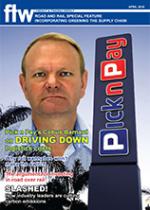There is no denying that when based
on full cost accounting calculations
for each mode, including energy
resource consumption and other
transport cost externalities, rail
has a financial and environmental
advantage over road.
But, says Allen Jorgensen of the
Railroad Association of
South Africa, only once the total
transport costs have been fully
investigated in South Africa will the
country be able to make informed
infrastructure investment decisions
that benefit all.
“Currently we are relying on
studies done in other countries and
unless we take an in-depth look at
our own country we will never be
certain what the real cost of
transportation is.”
While Jorgensen is a keen
lobbyist for rail, there is no denying
that road transport is fast and
flexible, he says. “There are many
‘hidden costs’, which can place one
transport mode at a disadvantage
when competing with another mode.
This can affect decisions regarding
infrastructure investments and
the environment.”
Taking international studies into
account it has been found that when
transportation cost externalities
such as space usage, accident
and congestion costs, pollution,
noise and traffic policing costs are
calculated and considered, road
transport costs would increase by
26-31%, while rail, by comparison,
would increase by about 5%.
“If infrastructure provision and
maintenance costs per net tonne-km
were included road freight costs
would increase by over 50%,” says
Jorgensen in a paper on transport,
energy and the environment.
He believes it is important to
put both the rail and road modes
on the same level of infrastructure
responsibility and then develop an
effective intermodal solution taking
advantage of the strengths of
each mode.
Intermodal is the way to go, says rail specialist
16 Apr 2010 - by Liesl Venter
0 Comments
Road And Rail 2010

16 Apr 2010
16 Apr 2010
16 Apr 2010
16 Apr 2010
Border Beat
Poll
Featured Jobs
New
New
New
